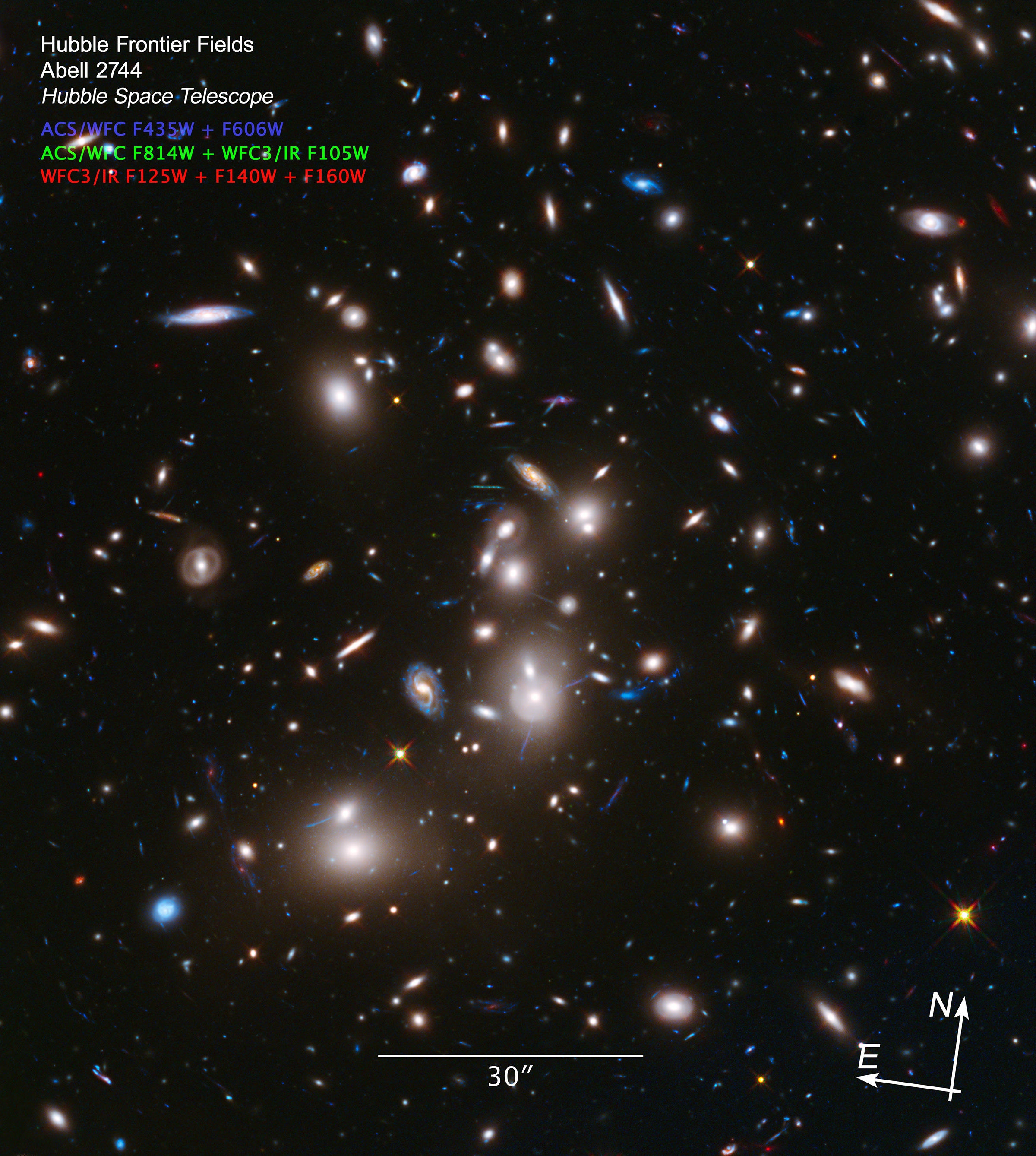Hubble Telescope Reveals One of the Youngest Galaxies Ever Seen

A new deep view of the universe from NASA's Hubble Space Telescope has revealed one of the youngest galaxies ever observed by astronomers.
The galaxy is ancient, but from the perspective of Earthlings, it looks young. Dubbed Abell2744_Y1, the galaxy is so far away that it takes about 13 billion years for light from the galaxy to reach our neighborhood. That means it appears as it was just 650 million years after the Big Bang, scientists say. The universe is estimated to be about 13.8 billion years old.
Visible and near-infrared data from the Hubble Space Telescope as well as infrared data from NASA's Spitzer Space Telescope show that the galaxy is 30 times smaller than the Milky Way, but it is churning out at least 10 times more stars and contains a large amount of gas, scientists say. [Photos: Hubble Space Telescope's Latest Cosmic Views]
Scientists have enlisted Hubble, Spitzer and the Chandra X-Ray Observatory — collectively known as the Great Observatories — to observe six huge galaxies clusters for the "Frontier Fields" project, a three-year-long study of objects in the early universe. Because of gravitational lensing — a phenomenon in which the immense gravitational field of a foreground object brightens and magnifies the light from more distant objects — observations of these clusters can reveal extremely dim, faraway galaxies.
Last month, astronomers unveiled the first batch of long exposures from the Frontier Fields project, showing stunning images of the cluster Abell 2744, also known as Pandora's Cluster, which lies some 3.5 billion light-years away from Earth. In the edge of this view, scientists spotted Abell2744_Y1, one of the most distant and youngest galaxies ever seen to date, far beyond the foreground of the cluster.
"We expected to find very distant galaxies close to the cluster core, where the light amplification is maximum," study researcher Nicolas Laporte, a post-doctoral researcher at the Instituto de Astrofísica de Canarias in Spain, explained in a statement. "However, this galaxy is very close to the edge of the Hubble image where the light is not strongly amplified. We are really lucky that we could find it in the small field of view of Hubble."
Scientists have said the Frontier Fields project will allow them to study the galaxies that developed during the first billion years of the universe's history. Observations from the trio of powerful space telescopes could also help researchers understand dark matter through the way this mysterious substance warps background light.
Get the world’s most fascinating discoveries delivered straight to your inbox.
The observations, which will be detailed in a forthcoming issue of the journal Astronomy and Astrophysics Letters, are available online on the preprint service arXiv.
Follow Megan Gannon on Twitter and Google+. Follow us @SPACEdotcom, Facebook or Google+. Originally published on Space.com.





